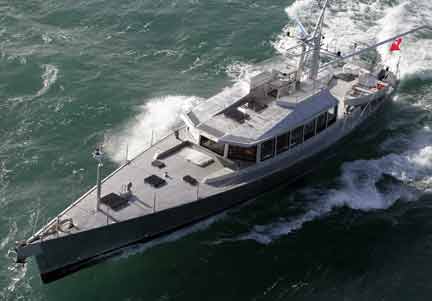
Many years ago, while researching ultimate storm tactics for our book Surviving the Storm (free download here), it became clear to us that, whether it was Fastnet 79, Queen’s Birthday Storm, or the 1998 Sydney Hobart Race, heading into the waves is often the best tactic in severe weather.
Because our yachts surf downwind under control making quick passages, and since in all but one of the serious storms we have experienced our natural course was downwind, we’ve rarely had the chance to experiment with truly dangerous seas on the bow. And while this most recent experience is far from what we would call a survival storm, the unusual sea state did give us a chance to test several FPB specific steering and throttle techniques, along with gathering a couple of ideas for improving electronics and night lighting layout.
The notes which follow, although aimed specifically at the FPB fleet, may offer some ideas to others who find themselves in difficult seas… Read the rest »


















































